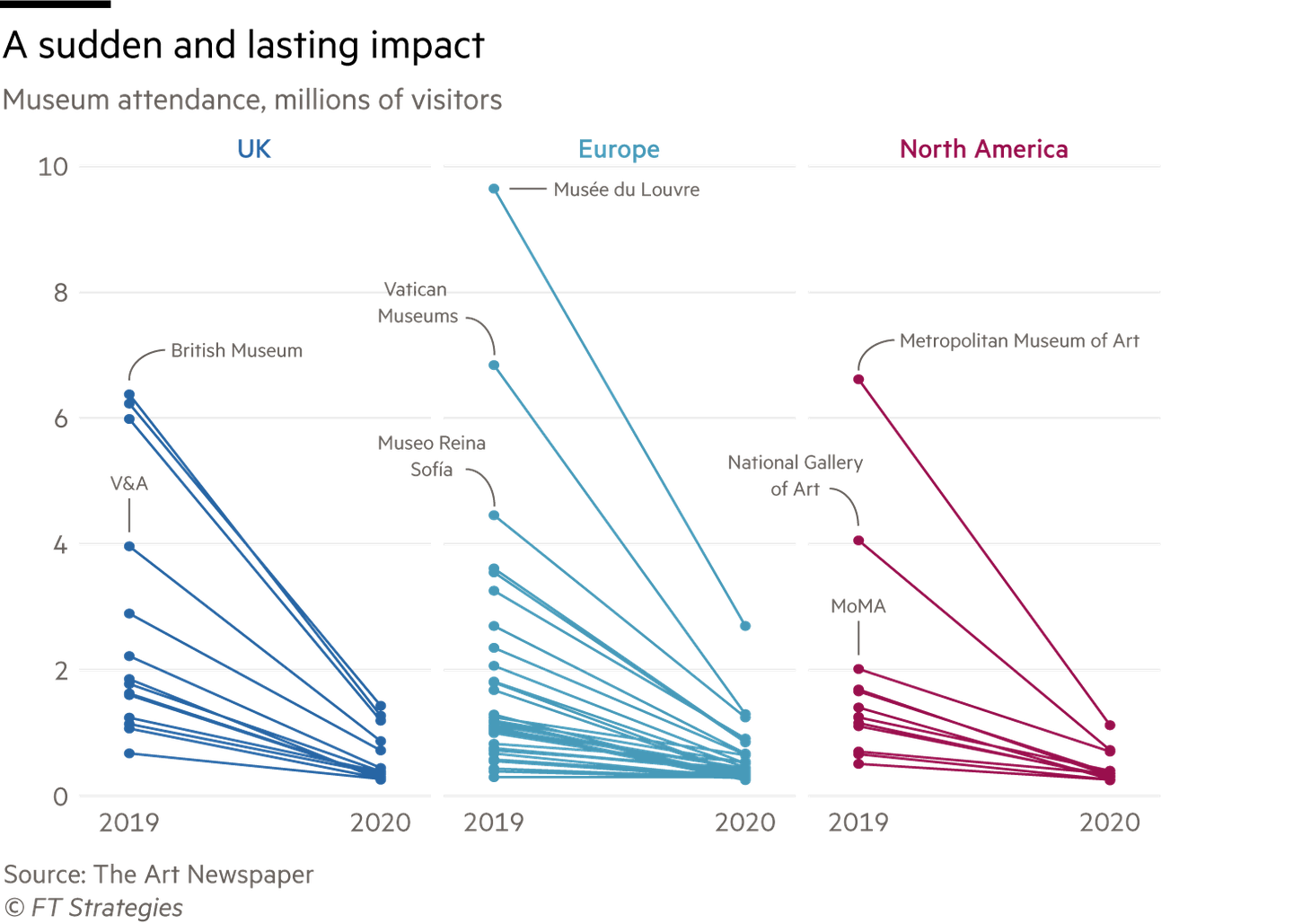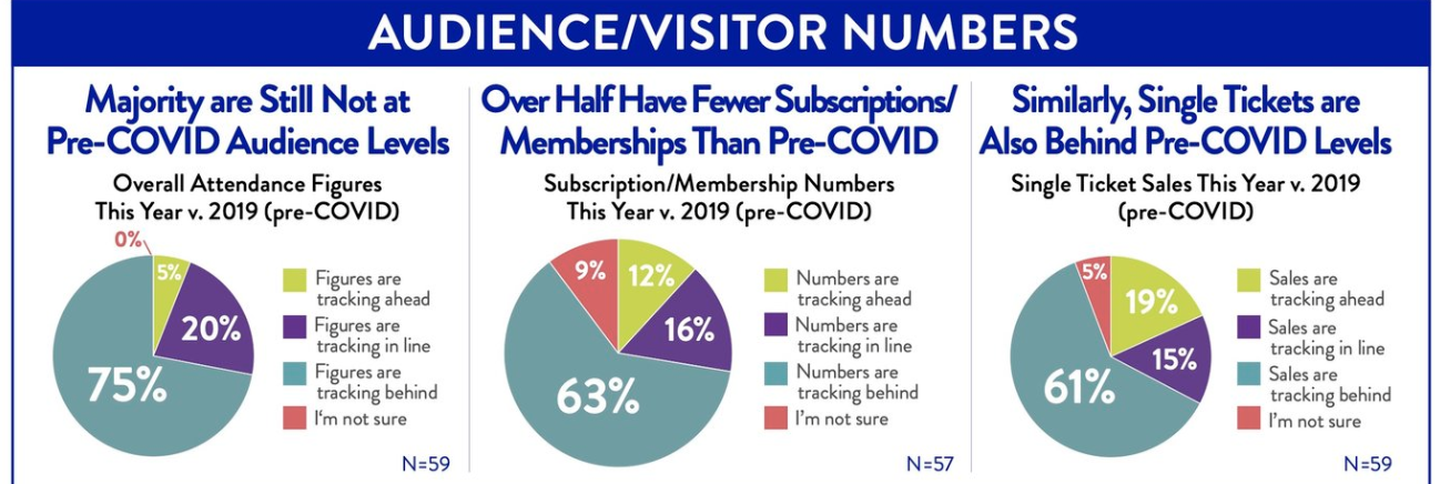Arts organisations have to focus on developing more sustainable business models to secure their future. In practice, this means reducing reliance on public funding and increasing recurring revenue from captive and new audiences.
This is not the first time that an industry has had to upend its prevailing business model. News Publishing has had to undergo a similar transformation - from primarily print to digital and advertising to reader revenue. The key question is, what lessons can arts organisations learn from the experience of news publishing to secure their future?
The UK arts and culture industry at risk
The UK arts and culture industry is at risk. That is the message from a report from the Lords communications committee - “The UK’s creative industries are an economic powerhouse and have been a huge success story,” said Tina Stowell, the committee’s chair. “But the fundamentals that underpin our success are changing, and rivals are catching up. The government’s failure to grasp both the opportunities and risks is baffling.” (Guardian).
Underpinning this change in fortunes is funding. There have been a number of factors that, when combined, have left arts organisations in a vulnerable financial position:
1. Covid-19 Lockdowns - as theatres, museums and art galleries were forced to shut, ticketing sales (a primary revenue stream) experienced an almost instantaneous decline. The Economist reported that “In 2019 the 100 most popular art museums globally enjoyed more than 230m visitors; in 2020 that figure fell to 54m, a drop of 77%. Cultural institutions were closed for much of the year by lockdowns, yet even when they could reopen, social-distancing measures limited them to 20-30% of their usual capacity”. In the context of the UK, the V&A said that the pandemic had “created one of the most significant financial challenges in the V&A’s history… with negative impacts on the V&A’s business model and operating capability” (V&A Annual Report).





2. Funding cuts - the Arts Council England’s effort to “level up” the funding allocation across the UK has led to unexpected, major cuts to key arts organisations. In London alone, over £50m worth of government cuts were made - including high profile organisations such as the Royal Opera House, The National Theatre and the English National Opera (who have lost 100% of guaranteed funding).
3. Under pressure business models - the Arts Leader Survey, conducted in September 2022, found that the “majority of arts organisations' audience attendance rates, subscription/membership numbers, and single ticket sales are all currently below pre-COVID levels.” This change in audience demand is forcing these organisations to reconsider their business models, value proposition and pricing. This trend is further exacerbated by the prevailing economic climate and cut backs on consumer discretionary spending.





How should arts organisations respond?
Arts organisations can learn from the transformation journey of news publishers - and create their own path to sustainability:
1. Evaluate the performance of your current business model and its future potential - deeply understand where your revenue is coming from, the areas of the business that drive the greatest profitability and free cash flow, and the areas that are likely to experience the most significant growth or decline. Focus on analysing data from the most important revenue streams including: public funding, single ticket sales, subscriptions / memberships, donations (both small and large) and sponsorships / advertising (if relevant). Use this information, and share it within the organisation, to create a shared understanding of your current position. As with all industries, arts organisations need to intentionally create the time and space required to undertake this exercise, rather than always getting caught up in day-to-day tasks.
2. Create a shared vision for the future of your organisation - and your North Star Goal. Bring together your executive team to imagine what a sustainable future looks like (in 5 years from now) - whether that is a fully member-funded gallery or a hybrid performing arts organisation. Once this vision is agreed, set yourself a North Star - a single, unambiguous goal that helps to create strategic alignment. The Financial Times credits the North Star framework with providing the focus that allowed the business to achieve the goal of 1M paying subscribers in 2019 (achieved a year early). The creation of the North Star goal - as explained by Emma Keith (Director of Digital at National Theatre) - allows you to create the operational and financial plans that underpin transformation.
3. Explore quick wins that improve revenue and profitability - from our experience, there are often a number of quick wins, that if implemented, can help to drive incremental revenue and profitability. In general, any adjustments should be tested first to understand whether they have a positive impact on the bottom line. Examples of quick wins include running pricing experiments on single-ticket sales, A/B testing membership sign-up pages or using card updaters to reduce payment failure for existing donors. Being able to evidence early success is critical in building trust and driving further transformation in the organisation.
4. Experiment with new ideas that are aligned to your vision and North Star - it is important to not just focus on quick-wins and tactics; whilst these will drive short-term results, they’re unlikely to secure the future of the organisation. As such, it is important to experiment with new ideas - whether it is a streaming on demand platform (like the National Theatre at Home) or an unlimited access theatre subscription (like Super Secret Arts in Brooklyn). Such initiatives have to be run as experiments with minimal initial investment that is then scaled in line with key performance metrics (such as audience, revenues or profit).
Although the industry faces challenges, there are undoubtedly opportunities to create a new “success story” within the arts. At FT Strategies, we have a commitment to help the organisations that enrich our experience of the world achieve financial sustainability. We work differently from other consultancies and go beyond typical strategic advisory. We partner with our clients to help them grow their businesses by focusing on co-created strategies underpinned by operational expertise.
If you’d like to get in touch and have a chat about sustainability in the arts - please do drop me an email directly.
About the author

